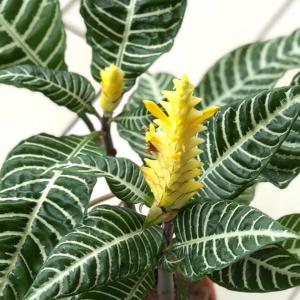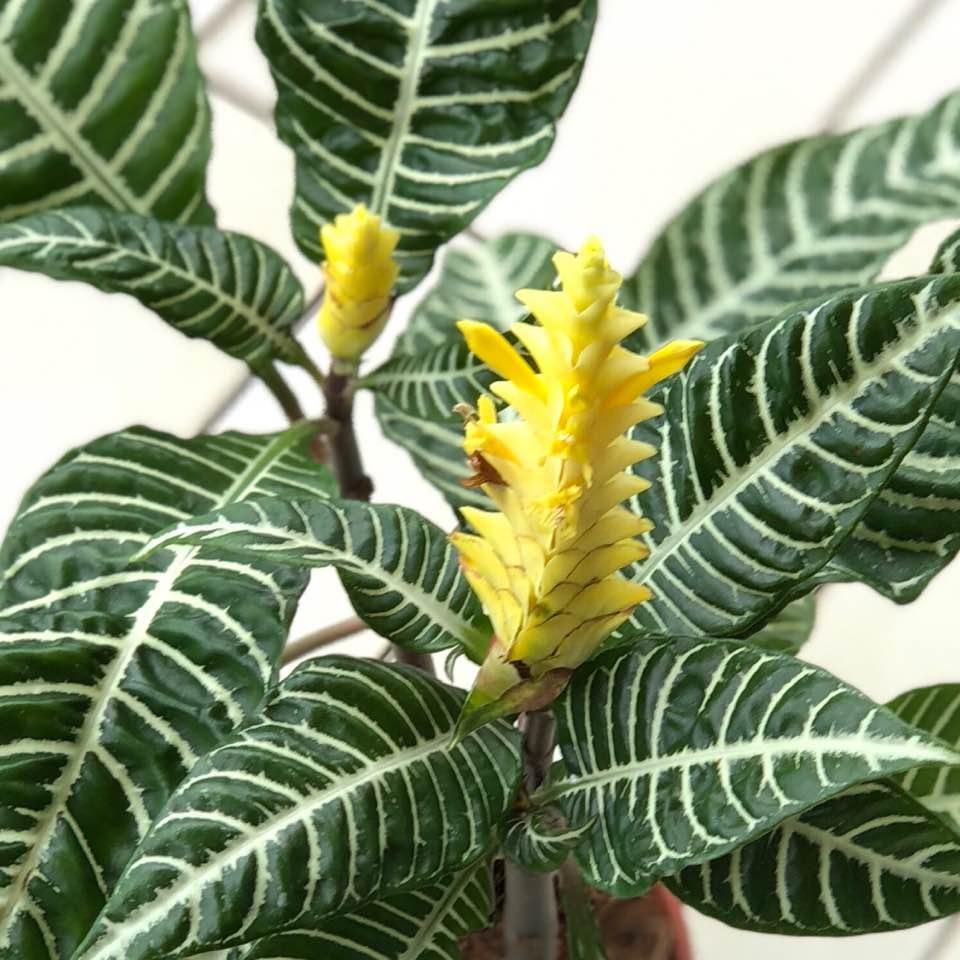植物经验
详细说明
Zebra plants have dark green, glossy leaves that are ovate with pointy tips. The white variegated veins create contrast, making it a striking plant to grow indoors.
When it blooms, the flowers are yellowish-gold and grow in bracts clustered on a spide that can reach up to 4" long.
Zebra Plant Care
Aphelandra squarrosa is one of the more difficult houseplants to care for, but that's not to say it's impossible! It just requires a little more love than ivy, pothos, or other low-maintenance plants.
Light
Zebra plants thrive when given bright, indirect light. While it can tolerate a bit of shade, it won't flower as often or as long if it's not given enough light. Because the flowers are so beautiful, make sure to give your zebra plant the best chance to develop them!
Water
Zebra plants are very picky when it comes to water. They are more sensitive than most plants to over or under watering.
Water your plant when the soil has just started to dry out. For best results, use filtered water that is slightly above room temperature and be sure not to over water.
Zebra plants prefer a higher humidity than most other houseplants at around 60-70%. There are two good ways to increase humidity for your plant:
1 Mist the leaves often
2 Place the pot in a tray half-filled with water
Soil
Zebra plants like rich soil that retains water, but drains well. An African violet mix is a good choice. The pots should have holes in the bottom for adequate drainage.
To make your own potting soil mixture, use:
• 1 part coarse sand or perlite
• 1 part garden soil
• 2 parts humus or peat.
Fertilizer
During the growing seasons (spring and summer), your zebra plant needs to be fed every 1-2 weeks. Use a high quality, water-soluble plant food.
Repotting
The best time to re-pot zebra plants is once a year in the spring. Use a pot that's only 1 inch larger than the current pot to avoid giving it too much space.
Pruning
If your zebra plant is flowering, keep an eye out for dying flowers and remove them. You can also prune the stem and leaves back once the entire bract begins to die. This prevents your zebra plant from stretching out too much and promotes bushier growth next spring.
Propagation
Zebra plant propagation is pretty simple and can be done via air layering or stem cuttings.
The cuttings should be placed in a mixture of perlite and moist peat, then covered in plastic to retain moisture. Put the pot in an area that gets indirect sunlight.
When taking cuttings, make sure they are at least 4-6 inches long and kept in an area that is at least 70-80°F.
Is the Zebra Plant Toxic?
While not listed on the poisonous plant list, the sap from a zebra plant may cause skin irritation to some people.
It's listed as toxic to cats and dogs, but it isn't fatal. Regardless, you shouldn't place your zebra plant in an area that cats and dogs can easily access, just in case.
Pests
Zebra plants are pretty resistant to most pests due to the fact that they like high humidity and many pests don't thrive in that environment. You shouldn't run into issues with spider mites, for example.
However, your plant can be hit with scale, aphids, or whiteflies though. The best course of action is to wipe them off with a cotton swab soaked in rubbing alcohol, then spray your leaves with water, then treat with a systemic insecticide.
Diseases
Because zebra plants love high humidity, you can run into many fungal issues. Try your best to avoid letting water sit on the leaves of your zebra plant for too long or you'll run into leaf spot fungus.
You can also over water your zebra plant and create ideal conditions for root rot, which will cause soggy roots and yellowing or drooping leaves. Water less and re-pot into fresh soil if you run into this problem.
When it blooms, the flowers are yellowish-gold and grow in bracts clustered on a spide that can reach up to 4" long.
Zebra Plant Care
Aphelandra squarrosa is one of the more difficult houseplants to care for, but that's not to say it's impossible! It just requires a little more love than ivy, pothos, or other low-maintenance plants.
Light
Zebra plants thrive when given bright, indirect light. While it can tolerate a bit of shade, it won't flower as often or as long if it's not given enough light. Because the flowers are so beautiful, make sure to give your zebra plant the best chance to develop them!
Water
Zebra plants are very picky when it comes to water. They are more sensitive than most plants to over or under watering.
Water your plant when the soil has just started to dry out. For best results, use filtered water that is slightly above room temperature and be sure not to over water.
Zebra plants prefer a higher humidity than most other houseplants at around 60-70%. There are two good ways to increase humidity for your plant:
1 Mist the leaves often
2 Place the pot in a tray half-filled with water
Soil
Zebra plants like rich soil that retains water, but drains well. An African violet mix is a good choice. The pots should have holes in the bottom for adequate drainage.
To make your own potting soil mixture, use:
• 1 part coarse sand or perlite
• 1 part garden soil
• 2 parts humus or peat.
Fertilizer
During the growing seasons (spring and summer), your zebra plant needs to be fed every 1-2 weeks. Use a high quality, water-soluble plant food.
Repotting
The best time to re-pot zebra plants is once a year in the spring. Use a pot that's only 1 inch larger than the current pot to avoid giving it too much space.
Pruning
If your zebra plant is flowering, keep an eye out for dying flowers and remove them. You can also prune the stem and leaves back once the entire bract begins to die. This prevents your zebra plant from stretching out too much and promotes bushier growth next spring.
Propagation
Zebra plant propagation is pretty simple and can be done via air layering or stem cuttings.
The cuttings should be placed in a mixture of perlite and moist peat, then covered in plastic to retain moisture. Put the pot in an area that gets indirect sunlight.
When taking cuttings, make sure they are at least 4-6 inches long and kept in an area that is at least 70-80°F.
Is the Zebra Plant Toxic?
While not listed on the poisonous plant list, the sap from a zebra plant may cause skin irritation to some people.
It's listed as toxic to cats and dogs, but it isn't fatal. Regardless, you shouldn't place your zebra plant in an area that cats and dogs can easily access, just in case.
Pests
Zebra plants are pretty resistant to most pests due to the fact that they like high humidity and many pests don't thrive in that environment. You shouldn't run into issues with spider mites, for example.
However, your plant can be hit with scale, aphids, or whiteflies though. The best course of action is to wipe them off with a cotton swab soaked in rubbing alcohol, then spray your leaves with water, then treat with a systemic insecticide.
Diseases
Because zebra plants love high humidity, you can run into many fungal issues. Try your best to avoid letting water sit on the leaves of your zebra plant for too long or you'll run into leaf spot fungus.
You can also over water your zebra plant and create ideal conditions for root rot, which will cause soggy roots and yellowing or drooping leaves. Water less and re-pot into fresh soil if you run into this problem.
花相册 (4)
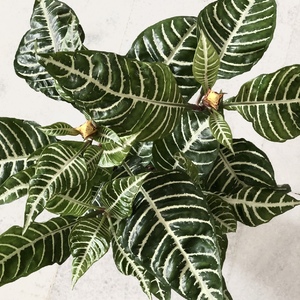
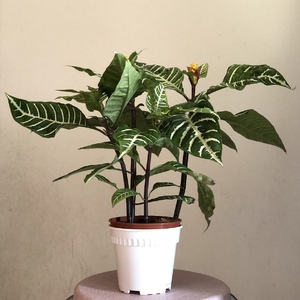

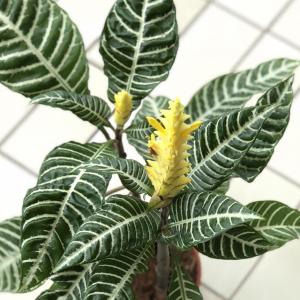
kensong
2018年06月16日

I've sent one of these to plant heaven. One of the first plant that sparked my interest in gardening. Second around I'm determined to keep them thriving.




kensong
2018年04月17日

This is my first growing diary.
